designed for the way women work.

The Curious Gardener Article #2
Category: Presenting "The Curious Gardener"
A Tuna Can Becomes A Tray Decoration
If you know someone who is homebound over the holidays, this is an idea that will bring a smile to their face. I belong to a garden club and each year at our December meeting we put together little tray ornaments and deliver them to groups such as Meals on Wheels and local hospitals. We make over 300 of these tray ornaments. Here are the supplies you will need:
-1 block of Oasis® floral foam (can be purchased at a florist or garden center)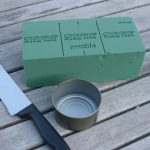
-1 empty tuna or cat food can
-8” square piece of foil (preferably floral foil that is colored on one side, but regular aluminum foil is acceptable)
-a handful of evergreens cut 4-6” long (from your own yard or purchased at a florist or garden center)
-assorted small decorations like ribbons, bows or mini-Christmas balls (optional)
-a pair of garden gloves if the greens are prickly to handle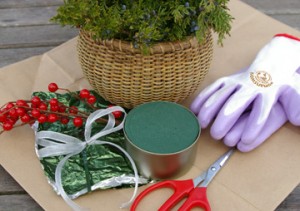
And here’s how you make one:
Step 1. Cut the piece of Oasis® floral foam lengthwise so it is just half as thick. After cutting it, it will be exactly as deep as a tuna can.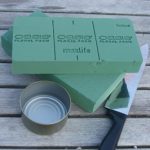
Step 2. Push your tuna can down into the half-thick Oasis®. Turn the can over and you have your base for the arrangement. Each block can turn out 6 tray ornaments.
Step 3. Soak the can with Oasis® in water to keep your greens moist. (Oasis® will stay wet for a week or more)
Step 4. Push sprigs of greens into the Oasis® and make an arrangement. Add ribbons and other ornaments as desired.
Step 5. Set the can in a square of florist foil and crimp the sides. You are ready to deliver your fragrant tray ornament to someone who will really appreciate it!
What to do with your Leaves? The Jury is in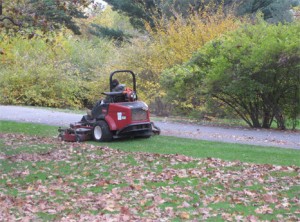
I have always heard that leaving a few leaves on the lawn is a good thing. But when I visited the New York Botanical Garden recently I saw pristine lawns with no leaves in sight. So which is it? Here is the answer.
I asked Kurt Morrell, who is the NY Botanical Garden’s head of landscape operations. It turns out he is passionate on the topic of leaves because it has become a hot button issue for municipalities around the country. Recent university studies have looked at the issue of ‘yard waste management’ because of the negative impact on the environment of large piles of leaves and grass clippings in municipal landfills.
At the NY Botanical Garden Kurt uses a mulching mower for his lawns early in the fall, so that the leaves get chopped up finely and left right on the grass. They are invisible to the eye, especially from a distance. Later in the fall when the leaf drop is heavier, instead of mulching them he picks them up and transports them to the compost heap. NYBG produces 1500 yards of compost a year and leaves are an important component of the mix. The following spring that compost is used in a variety of ways in garden beds and tree wells.
Are chopped up leaves bad for your lawn? Many home owners (including myself) wonder whether there are long term negative effects of leaving leaf mulch on the lawn. The recent university studies, conducted over several years, have enough data to show that there are no negatives, and in fact there are some positives. What they found is that overall soil quality improves, with no substantial buildup of leaf mat, regardless of what types of trees you have (pine needles excepted). The increase in microbial activity breaks down the chopped up leaves and improves aeration, water infiltration and even weed management. The key is to chop up the leaves finely with a mulching mower.
Is Doing Nothing an Option? — I like the look of a clean lawn, so it wouldn’t occur to me to leave my lawn full of leaves. That’s a good thing, because turf grass specialists told me unshredded tree leaves can smother the grass and kill a lawn. Even a thin layer can rob your lawn of access to the sun and increase the chances of snow mold in the winter.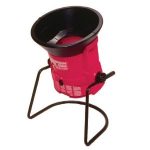
Leaf Shredder — One of my horticulturist friends, Ruth Rogers Clausen, loves her leaf shredder. She throws armfuls of leaves down the shoot and into a kangaroo bag, then layers them on her garden beds for the winter. In the spring she takes a pitchfork and pokes it into the top 2-3 inches of her garden beds, gives it a twist, and fluffs up her soil.
Leaves for Compost — Pound-for-pound, leaves have twice as many minerals as manure, according to the plant specialist at the New York Botanical Garden who answers a consumer call in line. Leaves provide much needed carbon, which complements the nitrogen found in grass clippings and other compost greens. If you can shred the leaves first
My Top Holiday Gift Recommendations for the Gardener
1) Membership to a botanical garden—There are hundreds of botanical gardens and arboreta around the country and they need the public’s support. The benefits of membership usually include free admission for 2, discounts at the shop and free parking—for a whole year. A membership makes a nice gift.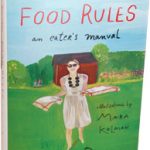
2) Gardening books—I have 4 book recommendations for gardeners, all very different from each other:
-“Food Rules” by Michael Pollan has just been re-released with illustrations by Maira Kalman, who is one of my favorite illustrators/artists/commentators on life.
– “Founding Gardeners” by Andrea Wulf is a great read for someone on your list who likes history and botany. It tells the story of the first four presidents (Washington, Adams, Jefferson and Madison) and their passion for plants.
-“Embroidered Ground: Revisiting the Garden by Page Dickey, one of my favorite garden writers. I have every book she has published.
-“Pushing Up Daisies” is a novel by Rosemary Harris, a master gardener and mystery writer. It’s a fun read for mystery lovers who are gardeners. Available in paperback for $7.
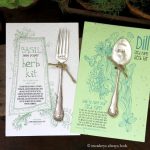 3) Handmade Gift—My daughter Eve discovered a designer on Etsy.com who makes plantable seed paper with garden markers. Check out Alison Cecil’s “Seed Paper Herb Kits” for Basil and Dill. (Also available on the Anthropologie website.) They’re handmade in the USA and start at $12.
3) Handmade Gift—My daughter Eve discovered a designer on Etsy.com who makes plantable seed paper with garden markers. Check out Alison Cecil’s “Seed Paper Herb Kits” for Basil and Dill. (Also available on the Anthropologie website.) They’re handmade in the USA and start at $12.
4) Eco Watering Spouts—Transform your empty plastic bottles into watering cans with these patented twist on bottle adaptors in three designer colors. Priced at $5 each or 3/$15.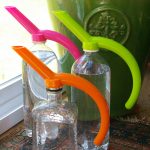
5) Dramm Water Wand—Not all gifts for the gardener have to be gift-y, so to speak. As an avid gardener I would like nothing more than to receive a fan nozzle spray gun or rain wand from Dramm under the Christmas tree. Dramm products are available at most garden centers. I won’t use my watering wand until spring, but boy will I use it then!
 6) Garden gloves—We humbly submit that we think Womanswork garden gloves make great gifts. Visit the Womanswork website to see all of the choices we offer for the female gardener in your life, along with gift boxes and gift cards. Prices for our gloves range from $8.50 to $38.
6) Garden gloves—We humbly submit that we think Womanswork garden gloves make great gifts. Visit the Womanswork website to see all of the choices we offer for the female gardener in your life, along with gift boxes and gift cards. Prices for our gloves range from $8.50 to $38.
7) Fabrics by Felicity Miller— I discovered Felicity Miller’s colorful fabrics this year and fell in love with her designs. If you like to sew, or the gardener in your life likes to sew, you can view this up-and-coming designer’s collection online at http://www.felicitymiller.com/. To order yardage of her fabric send Felicity an email at felicitykatemiller@gmail.com. Her designs would be great for a gardener’s apron, a quilt or garden bag.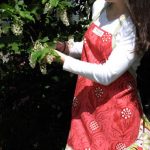
8) Subscription to a gardening magazine—My favorite garden magazine is Horticulture and I will be giving subscriptions to some of my gardening friends this year.


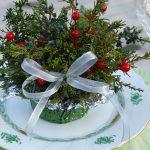
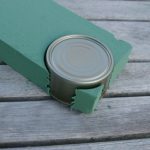
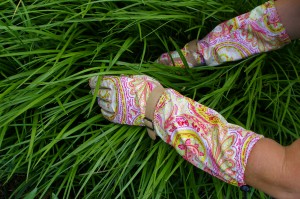


Thanks for your article on the “little tray ornaments.” What a great idea, and one that will bring joy to so many people.